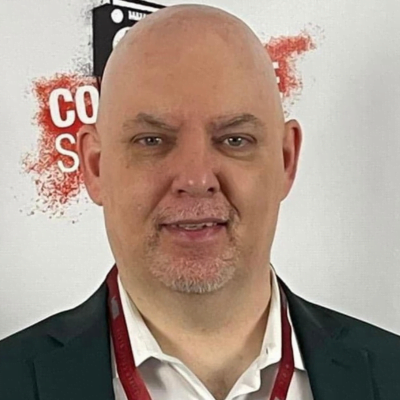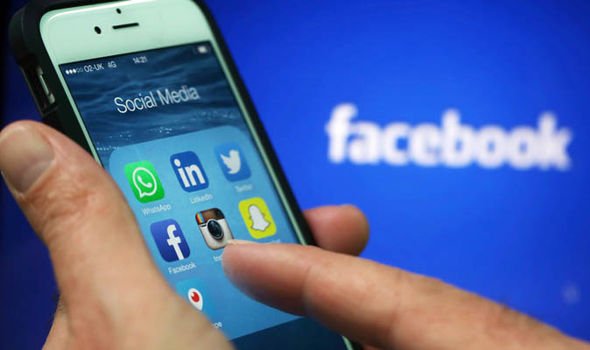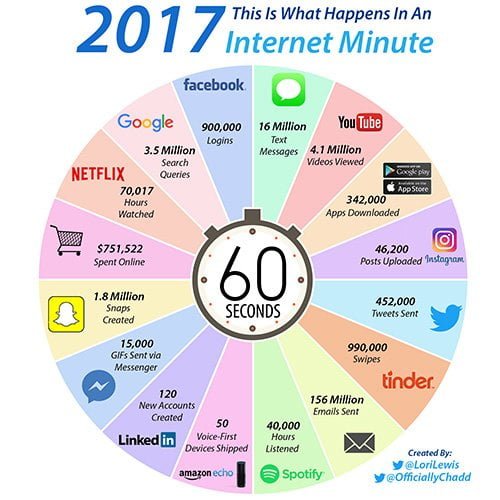Satisfying the wants and needs of the audience is a daily priority for every sports radio executive, host and employee. But when advancing the station-listener relationship beyond the airwaves comes into play, things become much more difficult.
One quote which I’ve grown fond of over the years is from Henry Ford, who said “If I had asked people what they wanted, they would have said faster horses.” Ford was making the point that people fear change, but when you have a vision, you can’t be afraid to take risks and introduce new ideas which might make things better.
In 2017, most sports stations operate over the air, online and on mobile. They also have a Twitter and Facebook account, with some even extending their presence on Instagram and/or Snapchat. Social media platforms are where the audience reside each day, and where brands can further extend their relationships with their most passionate fans.
When you dig into a radio station’s social media account, you often find they post photos or links to stories, and occasionally a piece of audio or video from the station’s shows or hosts. You also discover just how inconsistent and far behind many brands are when it comes to using these platforms effectively.
These issues aren’t any one person’s fault. They’re a reflection of the industry not providing enough manpower or defined strategy to help their brands and people excel in a foreign space. Other companies outside of the radio business not only understand these areas much better, but they’re dedicating people, time, and resources to them, because they see the long-term benefits.
This is a big problem in our industry. When new opportunities arise, we assume that it’s a simple task, and try to solve it by tacking on more responsibility to the people inside our operations. If the audience seeks more written or video content, we just ask the talent to do more. If advertisers want a campaign built around the radio station’s digital and social media assets and our sales team doesn’t grasp the difference of the space, we just arm them with a presentation, and trust that they’ll get in the room and close the deal just as they would any other radio buy.
Except some of our top radio hosts aren’t great writers or equipped to perform on camera. And many salespeople who have spent years, and in some cases decades, selling traditional radio, don’t understand the complexities of selling digital and social media. Some also don’t see the financial upside in selling it. I’ve been in multiple places where it becomes a value added item for a client, or the account executive closes a radio deal and then shifts part of the total earnings towards social and digital so they can satisfy their budgets in those areas and keep their managers happy.
But if this is a space where people are investing most of their time, and advertiser dollars are shifting to it, then that should be enough cause for concern for the radio industry to invest more resources to becoming experts in it.
Here’s a sobering statistic from Edison Research’s 2017 Infinite Dial study. Did you know that 81% of all american’s use social media? That number has grown nearly 30% in the last 5 years, and 57% in less than 10 years. Altogether, an estimated 226 million people currently use social media.
Here’s some other data to digest. According to Michelle Klein, Head of Marketing for North America at Facebook, adults check their phones 30 times per day. The average millennial checks it 157 times per day. Most of each person’s phone time is spent checking their social media accounts.
If you consider that the average person sleeps 8.8 hours per day, that makes them accessible for 15.2 hours per day. This means that your brand has an opportunity to connect with the audience every 30.4 minutes, and a total of 30 different times per day on social media. More than a third of a person’s time is spent on social media, and each time they log on to check their account, your radio station is given an opening to present your content, personalities, promotions, and client messages to them (assuming they’re following your brand).
But now let’s look at the other side of this equation.
Inside most radio stations, people are consumed with the over the air product. They focus on ratings and revenue, and the thought of changing anything makes many uncomfortable, because it could disrupt the brands chances of earning a quarter hour of listening.
But once again, let’s look at some evidence.
First, the average person’s commute time in the United States is 26 minutes per day. This means that if they drive to and from work listening to your station, they will spend a total of 52 minutes per day consuming your content. That’s assuming of course that they never leave their car, make a phone call, play a CD or change the dial to sample another radio station.
Maybe they’ll also listen to your station while at lunch or at at work, but if we’re being realistic, most brands rely on in-car listening, which means that at best, you’ll earn 4 quarter hours of listening during a 52 minute drive. Even if I doubled that number of commute time for larger cities where traffic is heavier, that still only gives the radio station access to the audience for up to 2 hours a day, a total of eight quarter hours.
Meanwhile, the average person spends 50 minutes per day on Facebook, 25-30 minutes on Snapchat, 21 minutes daily on Instagram, and 17 minutes on Twitter. When you look at the younger demographic (18-29), the numbers are even higher. Most people now use a minimum of two social media accounts, and they’re investing more time before, during, and after work on these platforms.
Why should that concern you? Because soon these will be the people you’re trying to reach, except getting them to use your radio station will be as easy as convincing Donald Trump to stop tweeting.
Their parents may have grown up on radio, but they haven’t. That means you’ve got to play by their rules. Your entry point to them exists, except it’s not inside of a vehicle on a dashboard. It’s a place where they’re already established, and you too have a solid foundation. The big difference is that it dominates their life, while you consider it to be an afterthought – social media.
Remember when I wrote the piece last week about the sports format needing to consider eliminating sports updates? Traditionalists took exception because it’s different than what they’ve been used to for the past thirty years. But in this case, change is necessary, and here’s why.
If the average person only hears 2-4 updates per day due to spending 52 minutes of total time in their car, and the reports themselves offer minimal original content and unique value (not to mention they’re often tied to a commercial break which causes further tune out), and we have key areas of our business performing poorly which require greater maintenance and focus, then what are we debating about? We’ve got to take a collective look in the mirror and ask ourselves, why we’re resisting efforts to serve the audience in the places where they’re most available.
We focus our time and energy resisting change to an antiquated update structure, which has a maximum potential of reaching our listeners 2-4 times per day, while the same listeners are engaged and accessible on social platforms 30 times daily and for the same amount of time as their daily commute. If you’re a gambler, would you bet on people spending more time on the radio and less time on social media over the next 5 years? If you answered yes, please email me. I have a bucket of steam, a left handed screwdriver and a wall stretcher that I’d like to sell you.
One of the biggest issues I see is that most sports radio brands don’t have dedicated digital and social media strategists inside of their buildings. Nor do they have a game plan or the knowledge of how to maximize the station’s relationship with the audience and advertisers in that space. They may receive corporate support from time to time, but even those corporate teams with great insights and strategies, are at the mercy of what each brand does on its own. That becomes increasingly difficult when overseeing the strategic efforts of more than one hundred radio stations, many of which broadcast different formats.
To excel in the social space, companies have to be willing to make larger investments to help their brands. This is vital to every station’s existence, relevance, and future growth. Before the company dedicates funds though, they have a right to question each operator about the dollars they’re already spending towards their on-air products. If resources are being used in areas that deliver minimal impact, then it’s worth exploring redirecting those dollars to further improve the brand’s social and digital media strategy and execution.
As it relates to the social picture, I did a study recently of twelve local sports stations to see how active and engaged their brands were on Facebook. The brands I chose for this project were WFAN and ESPN New York 98.7FM in New York, ESPN LA 710 and AM 570 L.A. Sports in Los Angeles, 790 The Ticket in Miami, 620 WDAE in Tampa, 1500 ESPN in Minneapolis, Arizona Sports 98.7FM in Phoenix, Sports Radio 94 WIP in Philadelphia, ESPN 97.5 in Houston, the Mighty 1090 in San Diego and Sports Radio 810 WHB.
I selected these stations for a few reasons.
- I wanted to feature a number of different corporate groups. For this project, CBS, Entercom, ESPN, iHeart, Hubbard, and Bonneville were all represented.
- I wanted to examine a few locally operated brands. Gow Media, Union Broadcasting, and Broadcast Company of the Americas all fit that description.
- I wanted to see how stations executed on both coasts, in the north and south, and in the middle of the country.
- I wanted to analyze a few stations with strong leaders who I know have thick skin, and who know that I don’t take personal shots and am only interested in helping our business improve.
- I wanted to profile a few brands that I don’t have deep relationships with because it’s a little uncomfortable and forces me to be thorough and honest.
Over a period of 24-48 hours, I examined how often these stations posted, what time of the day their material went up, which content they featured, and the amount of response they provided to the audience’s feedback. I chose Facebook over the other platforms because it is the most utilized social network on the planet. The others aren’t even close. If you’re unsure about that, check out slides 1, 2, 3 and 4 courtesy of the 2017 Infinite Dial study done last week by Edison Research.
To see my full report for all 12 sports stations, click here.
Something that’s important to understand is that each platform requires different tactics. What you do on Twitter won’t work on Facebook, and what you do on Facebook won’t register on Instagram. You also need to understand which days and times the audience is most available, and capitalize on those opportunities. Fast Company conducted a study to share best practices and I recommend clicking the link to familiarize yourself with it.
An area of frustration for many radio stations is how Facebook uses sophisticated algorithms to limit a brand’s ability to reach their entire audience. But while it may fuel your desires to share a few expletive laced commentaries with Mark Zuckerberg, it’s the platform that delivers the biggest impact, and you can’t afford not to make this your brand’s top social media priority.
One thing you can do to help yourself, is make sure you’re posting material that doesn’t read as an ad. If it comes across as shareworthy content that’s even better. Anytime you attach a video or photograph to your posts, your odds increase of the content being viewed by a larger part of your fan base.
I noticed while researching this story that many stations tend to follow a similar pattern when posting material. They often update social media content during the weekday business hours when everyone is inside the building. However, when people are home from work at night or on the weekend, and actively engaging with a sports brand during a popular sporting event, the content dramatically decreases. They also tend to post content in off peak hours that isn’t as topical, which does little to help the brand.
Another area of concern, one which I consider the worst sin of them all, is the lack of engagement that most sports radio stations provide to their fans on Facebook. This is true for radio stations outside of the sports format too. Tons of comments are being sent to your brand each day, but they rarely get answered. Imagine if your audience kept calling your phone line to talk to your hosts, and sent in a flurry of texts to the air studio, but nobody ever acknowledged them. Eventually the audience would stop engaging. Well, this is the expectation you’ve created in the mind of your audience as a result of being absent on social media.
What happens in most cases on these pages is a one sided conversation. The radio station pushes out the content, hopes the audience clicks a link or gives the brand a like or comment, but rarely do they take the time to acknowledge the listener’s existence. What this tells the audience is that there’s limited upside for engaging with the brand, and they’re better off instead sending a text to the studio, an email to the program director or a tweet to the host. Why? Because in each of those three cases they have a much better chance of receiving a response.
Ask yourself this question, why would my audience engage with my radio station account? What is the upside in the relationship for the listener? Do they gain access to information they can’t get elsewhere by following the page? Are they earning any rewards for liking and commenting on your material? If they never gain a response or benefit, why would you expect them to continue supporting you in the future?
Here’s a few others to think about. If I asked you what your engagement percentage was on your social media accounts, would you know it? Do you know how many posts your band delivers each day? If your CEO called and asked, “how do we grow our Facebook likes by 10,000 over the next 12 months”, do you have a strategy to do so?
The term “social media” implies that you’re entering a public community where others will interact and share ideas, content and information. Except most sports stations aren’t doing that. The term that best describes our approach is “one sided media” because we focus solely on pushing content at people and not participating in the experience with them.
So how do we fix it?
It starts with each company, market manager, and program director taking a good hard look at the way they’re executing, and admitting that it’s a space they need help in. Most brand managers lack superior knowledge and vision in the social space because it’s unfamiliar territory, and still relatively new. But if this is where your listeners are most available, and advertisers continue to spend more on digital and social assets, then that should serve as a motivator to get it right.
Then what follows is exploring deeper ways to educate everyone inside each building. Whether that’s attending a social media conference to learn tricks of the trade, bringing a social media strategist into your building from a company unrelated to radio to share best practices with your crew or studying on your own time how to best use and monetize these spaces, it requires sustained effort and a lot of learning.
After that, each station has to review its internal structure, and figure out who inside their operation can help the brand improve its social media relevance, reputation, and response time. This may require reassigning people to new positions that provide a much bigger payoff for them and the company, and/or hiring non-radio people who are experts in the space to help lead the radio station’s digital and social media efforts.
But to those of you who would be tasked with hiring someone to lead the brand’s digital and social strategy, I want you to consider something. If this is an area you’re not skilled in, how do you know if you’re crafting the right job description, targeting the right candidates, and asking the right questions?
Too often in radio we assume that just because someone designed a website, wrote a newspaper column, or worked inside another media company’s digital department that they’ll be qualified to create the brand’s digital and social media identity and execute the vision to make it matter. But we learn afterwards that they’re not versatile enough. It’s easy to blame the individual for not doing the job, but the process also reveals a lack of strategy in our hiring, and an unwillingness on our end to go outside the box and look in different places for digital/social brand leaders.
When a radio station is hiring a program director, the market manager and corporate team work together to make sure they find a person capable of managing and leading the radio station’s on-air staff, strategy, and execution. In this case, the same line of thinking is necessary. You have to think of this person as the digital/social media programmer of your brand, and that requires a special set of skills. It’s not a job for the person with the least amount of hours in the promotions department or the handful of producers on your shows who are already spread way too thin.
Far too often in our business, there’s a lack of urgency for becoming masters in new areas. There’s this mentality that it’s simply enough to be strong on the air and present in the social space, rather than add people who are experts in it. Well guess what? It’s not enough.
Do yourself a favor today and take a few minutes to read this piece from Lori Lewis, who lists the various things that happen inside of an internet minute. This is what you’re up against every day if you’re not cutting thru the clutter and forming deeper relationships with your audience.
There’s no excuse to be invisible to the audience on your own page. If the audience is taking the time to like or follow your account, and they’re reading your posts, promoting it to their friends, responding to topics, and supporting your advertisers, the least you can do is acknowledge them. This will especially come back to haunt you with younger people who won’t be as patient or as loyal as your current P1’s might be.
If you saw the movie “Moneyball” you may remember the scene when Brad Pitt (playing the role of Billy Beane) tells his entire scouting department they need to think and act differently when replacing a few superstars who were leaving via free agency. Beane understood that the Athletics couldn’t match up against larger market clubs when economics entered the equation, and if they planned to compete, they were going to have to adjust their strategy. His message to the group was that they had a choice, either adapt or die.
Well, we’ve got to do the same if we want to take advantage of the social space.
Sports radio’s social media strategy may not be on the verge of extinction, but if we keep ignoring our fans, bombarding them with irrelevant material at the wrong times, and treating social platforms like an afterthought instead of a critical part of our business, we could miss out on significant opportunities to strengthen our relationships with our audiences and advertisers. Before we end up like dinosaurs, let’s educate ourselves, and make sure we’re positioned to ride this gravy train as far as it will take us.

Jason Barrett is the Founder and CEO of Barrett Media. The company launched in September 2015 and has provided consulting services to America’s top audio and video brands, while simultaneously covering the media industry at BarrettMedia.com, becoming a daily destination for media professionals. Prior to Barrett Media, Jason built and programmed 95.7 The Game in San Francisco, and 101 ESPN in St. Louis. He was also the first sports programmer for SportsTalk 950 in Philadelphia, which later became 97.5 The Fanatic. Barrett also led 590 The Fan KFNS in St. Louis, and ESPN 1340/1390 in Poughkeepsie, NY, and worked on-air and behind the scenes at 101.5 WPDH, WTBQ 1110AM, and WPYX 106.5. He also spent two years at ESPN Radio in Bristol, CT producing ‘The Dan Patrick Show’ and ‘GameNight’. JB can be reached on Twitter @SportsRadioPD or by email at Jason@BarrettMedia.com.











Comments are closed.